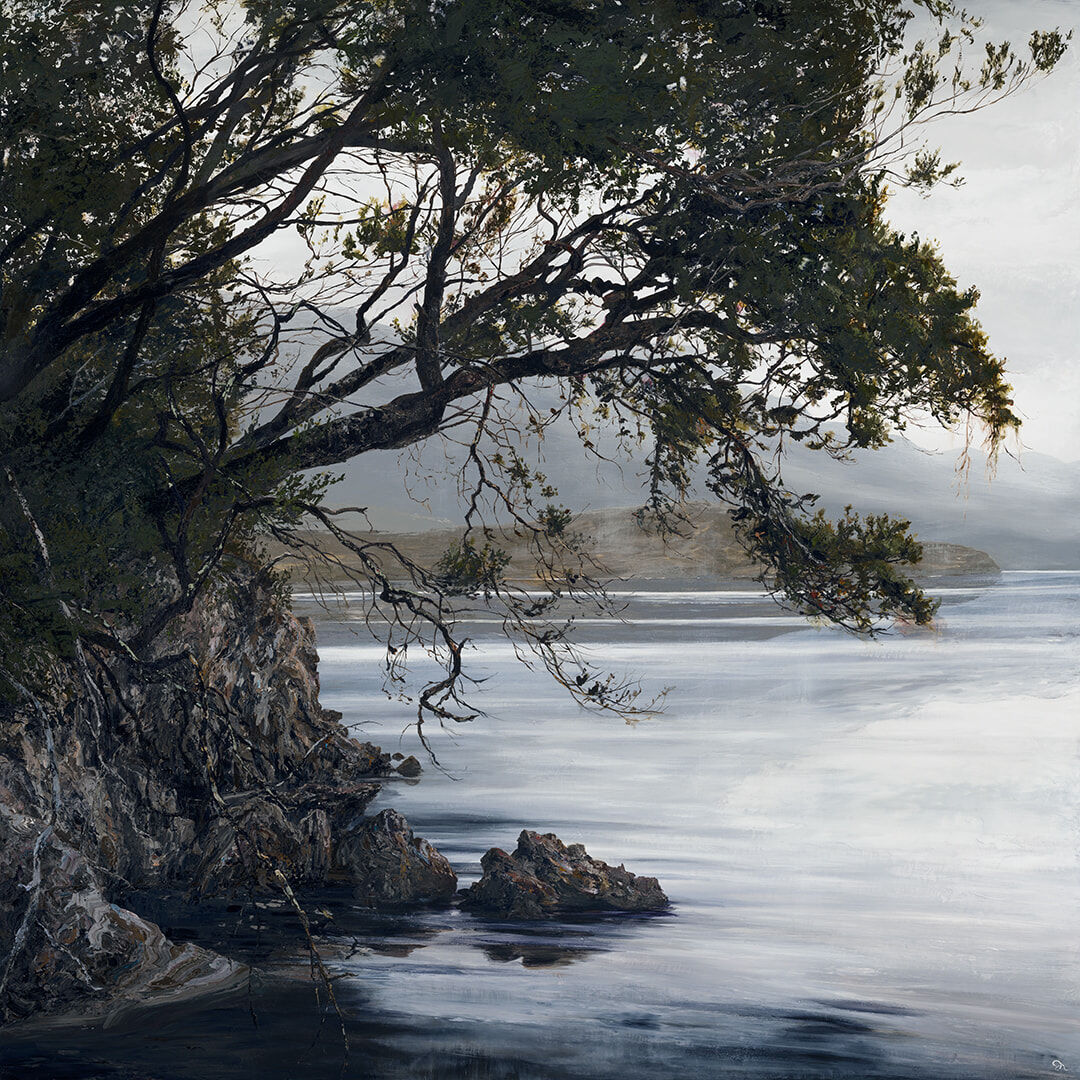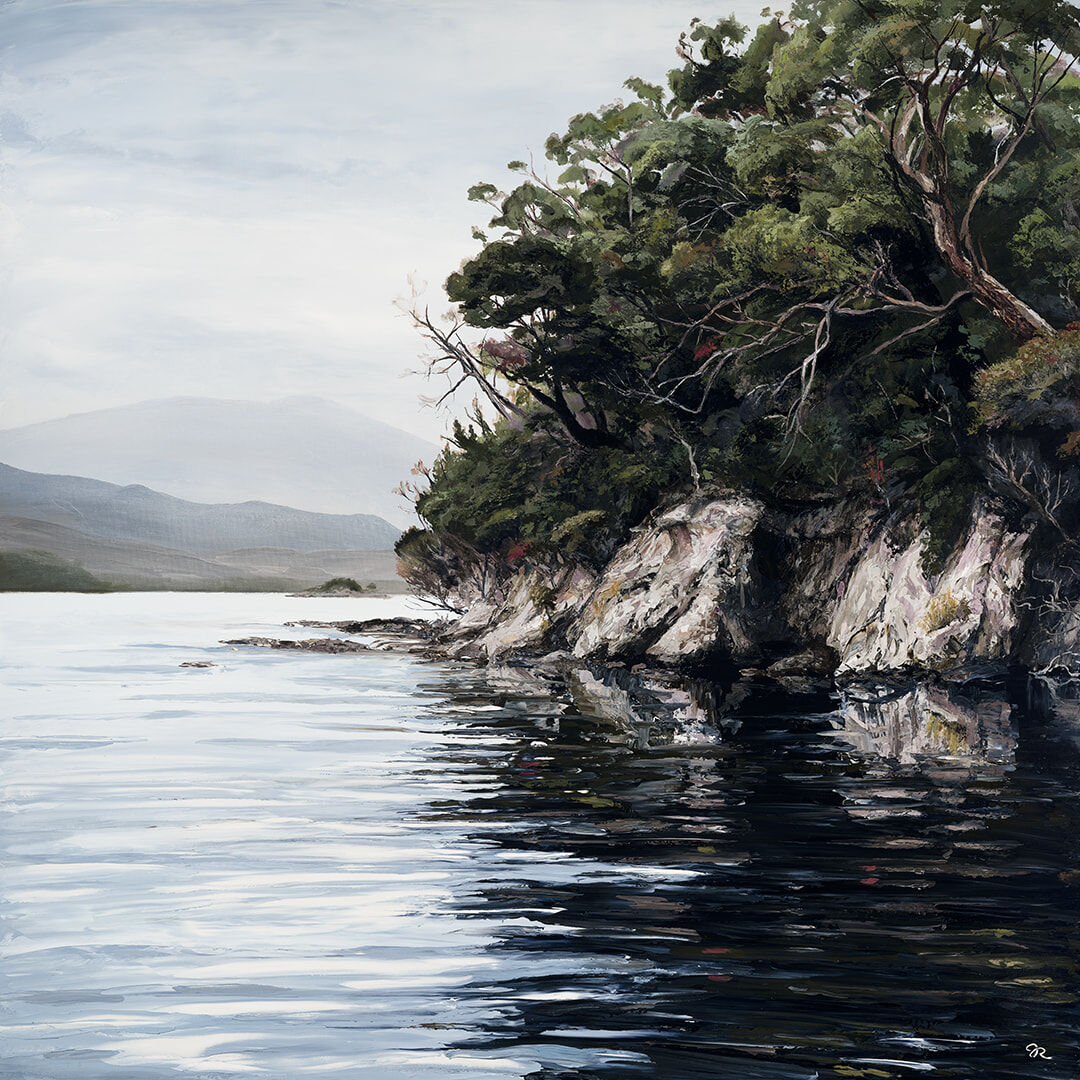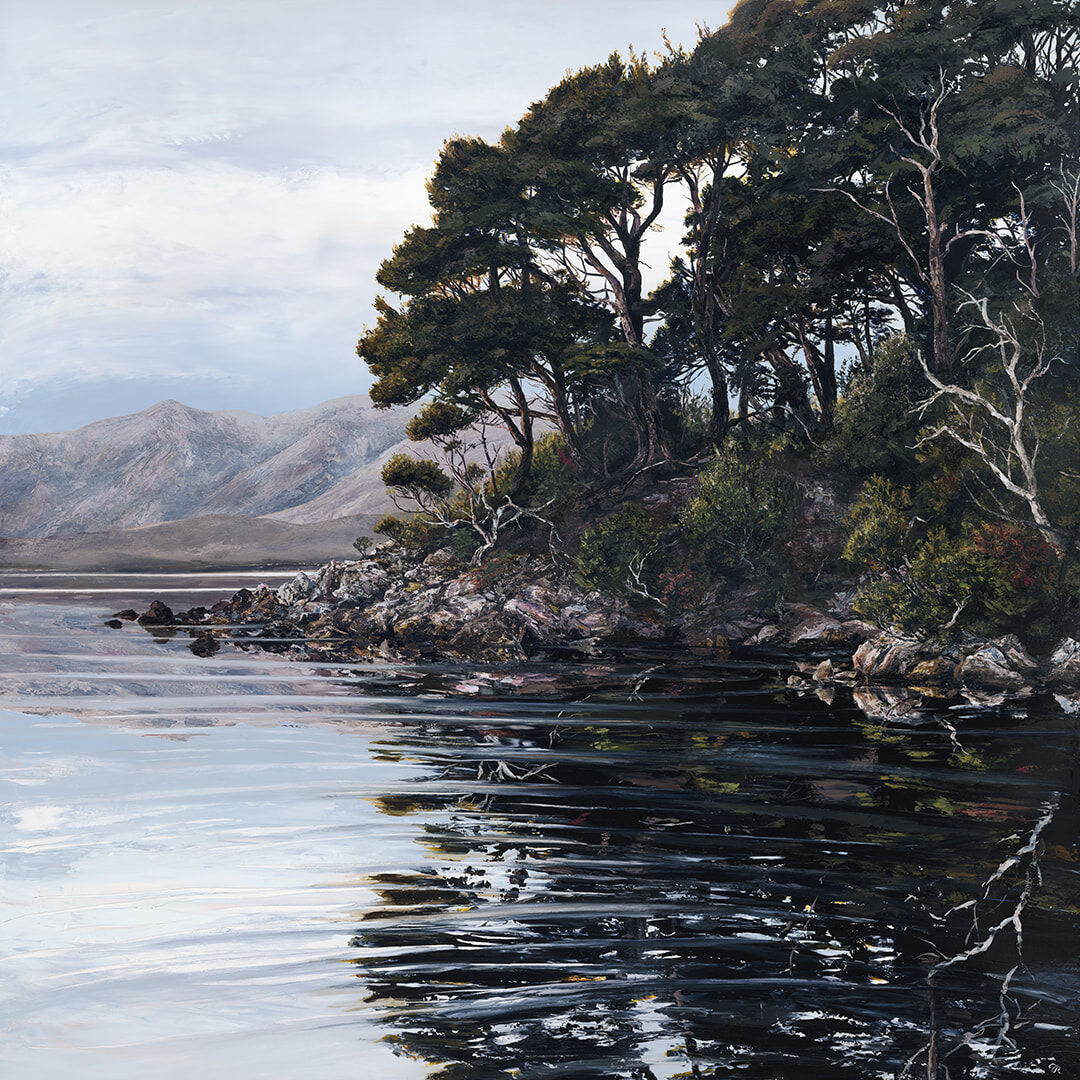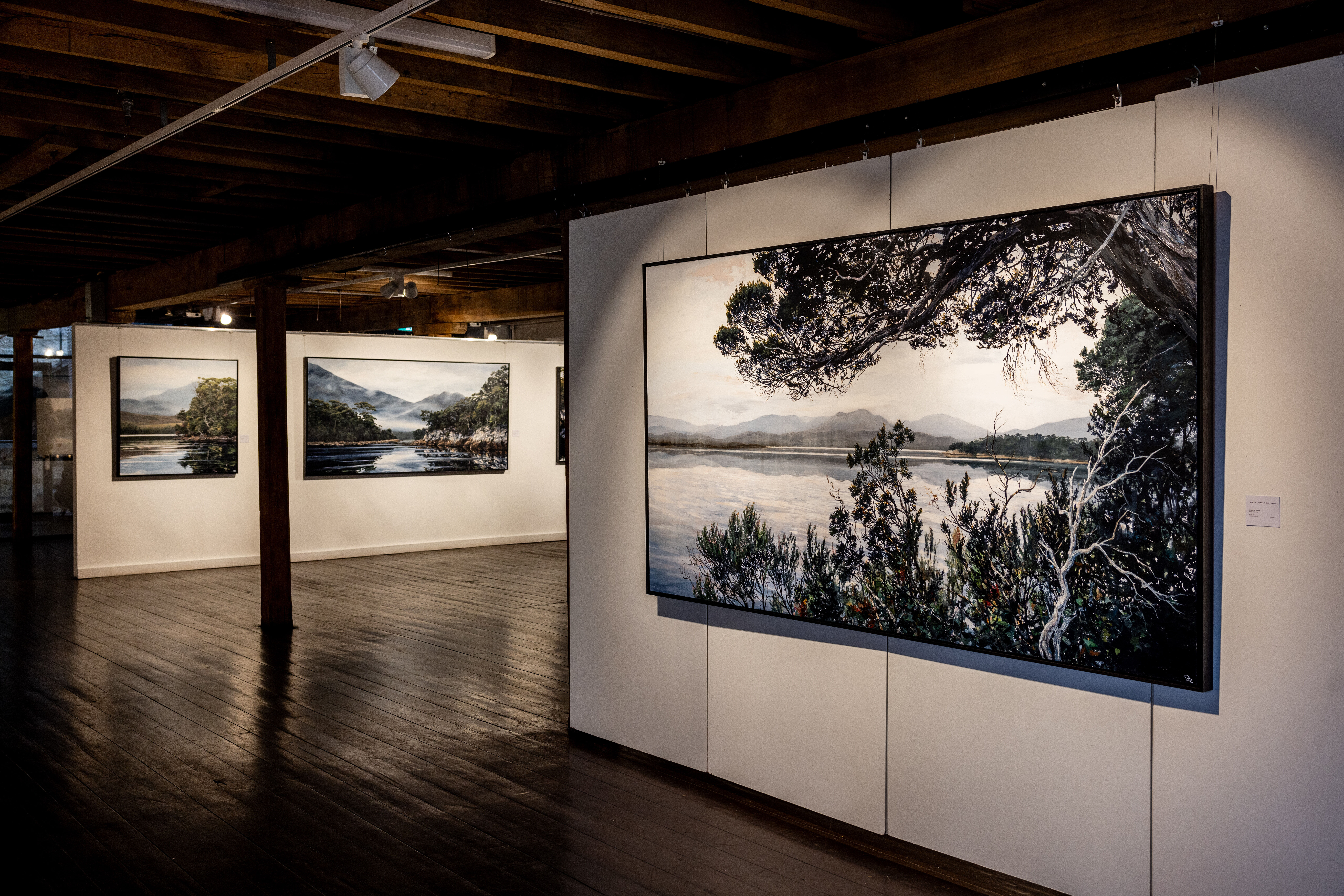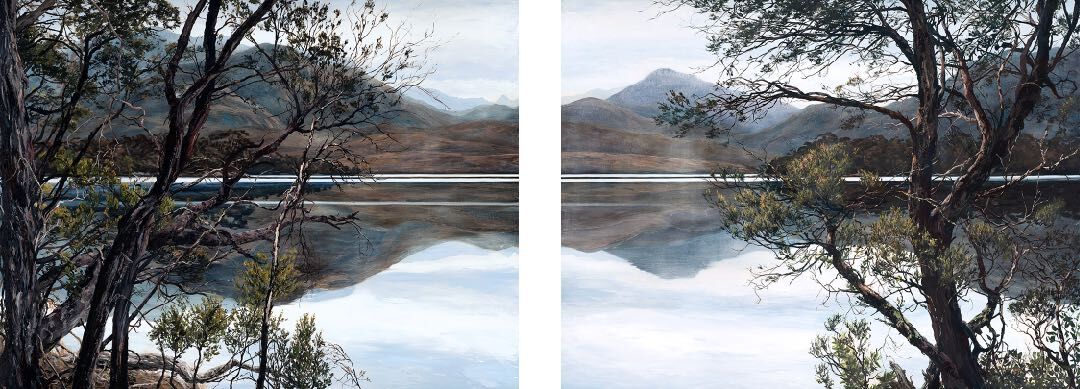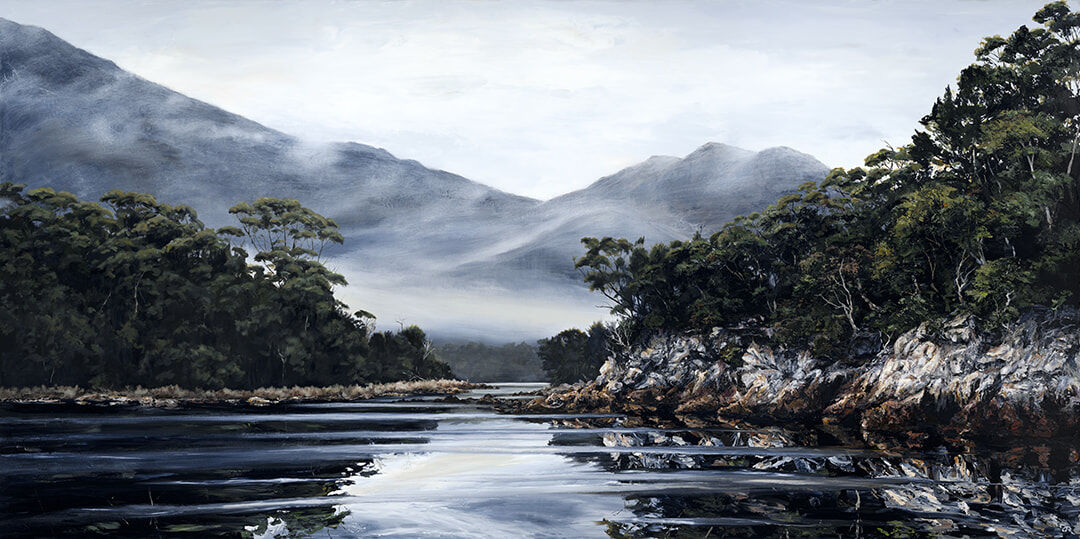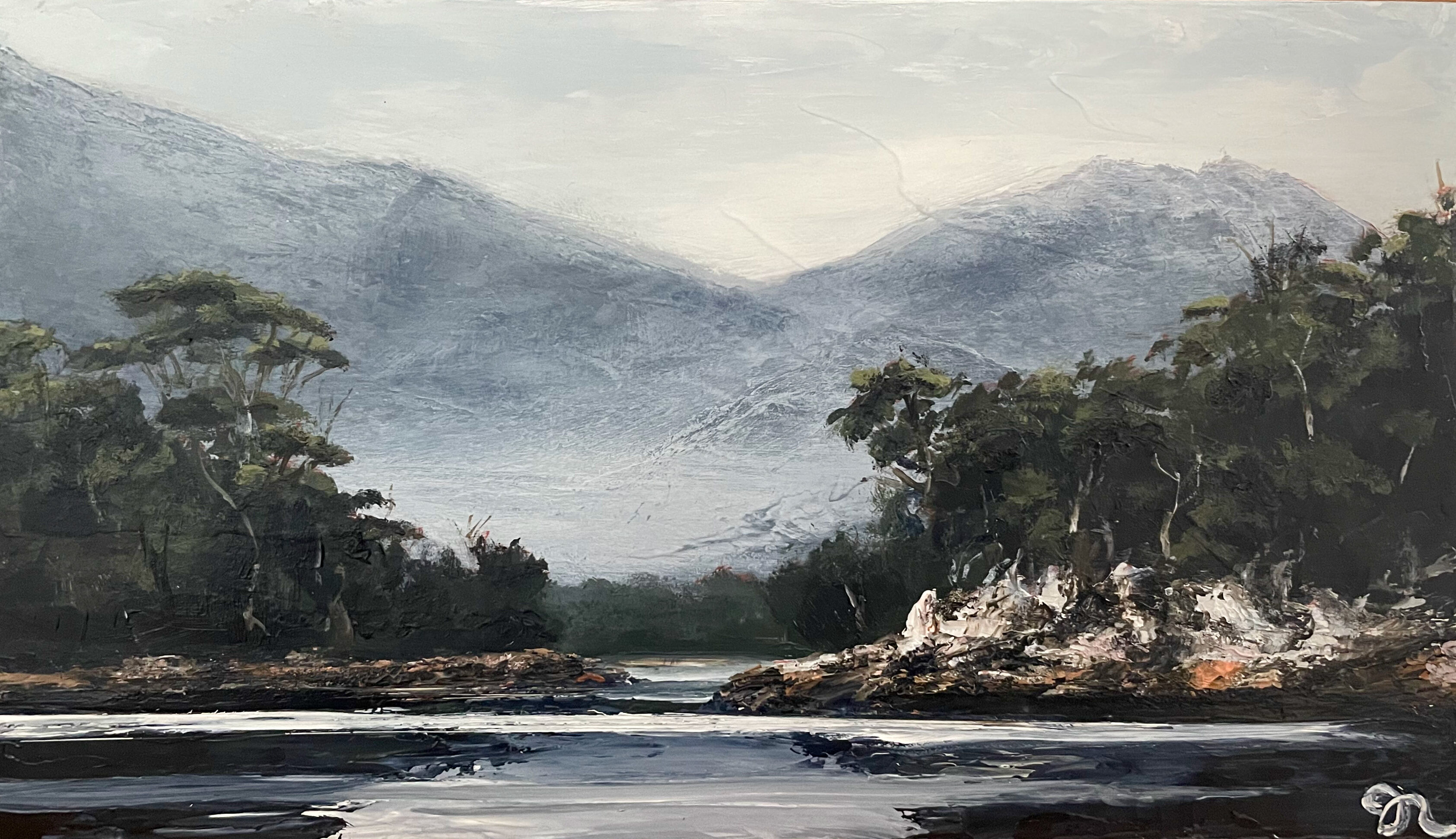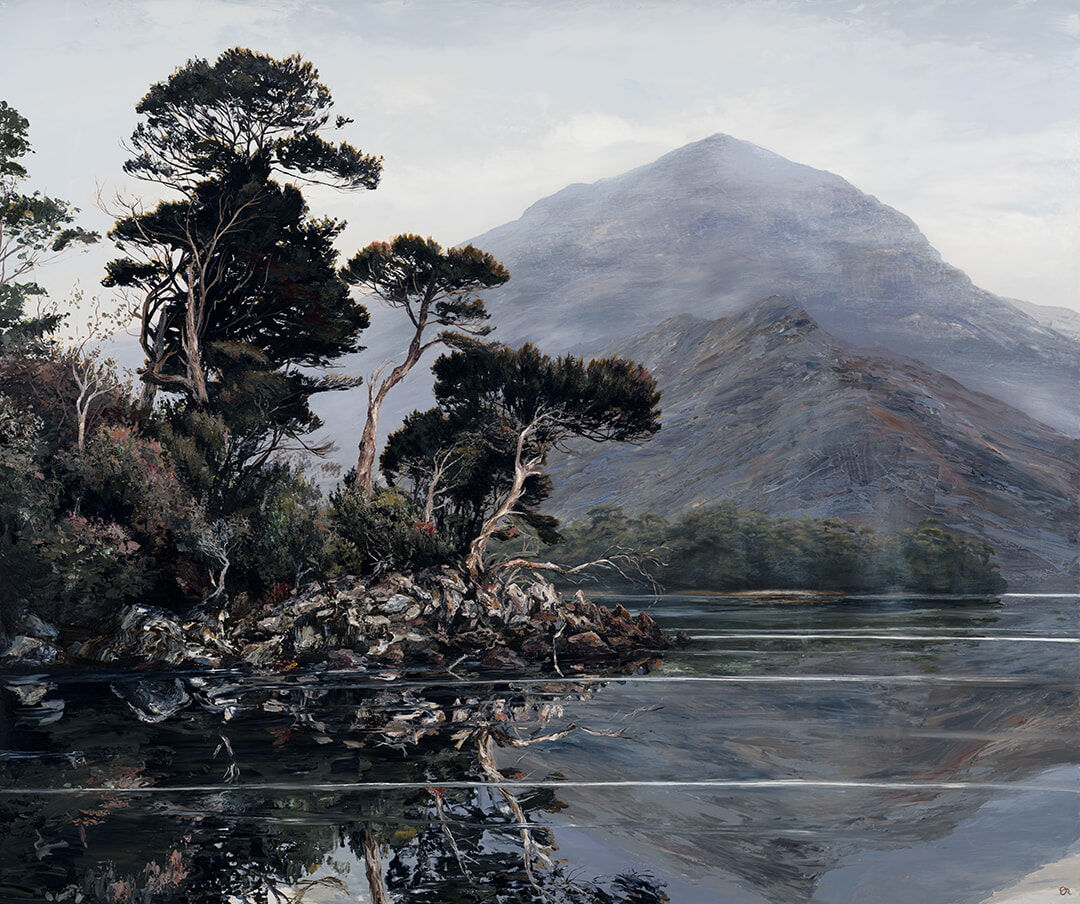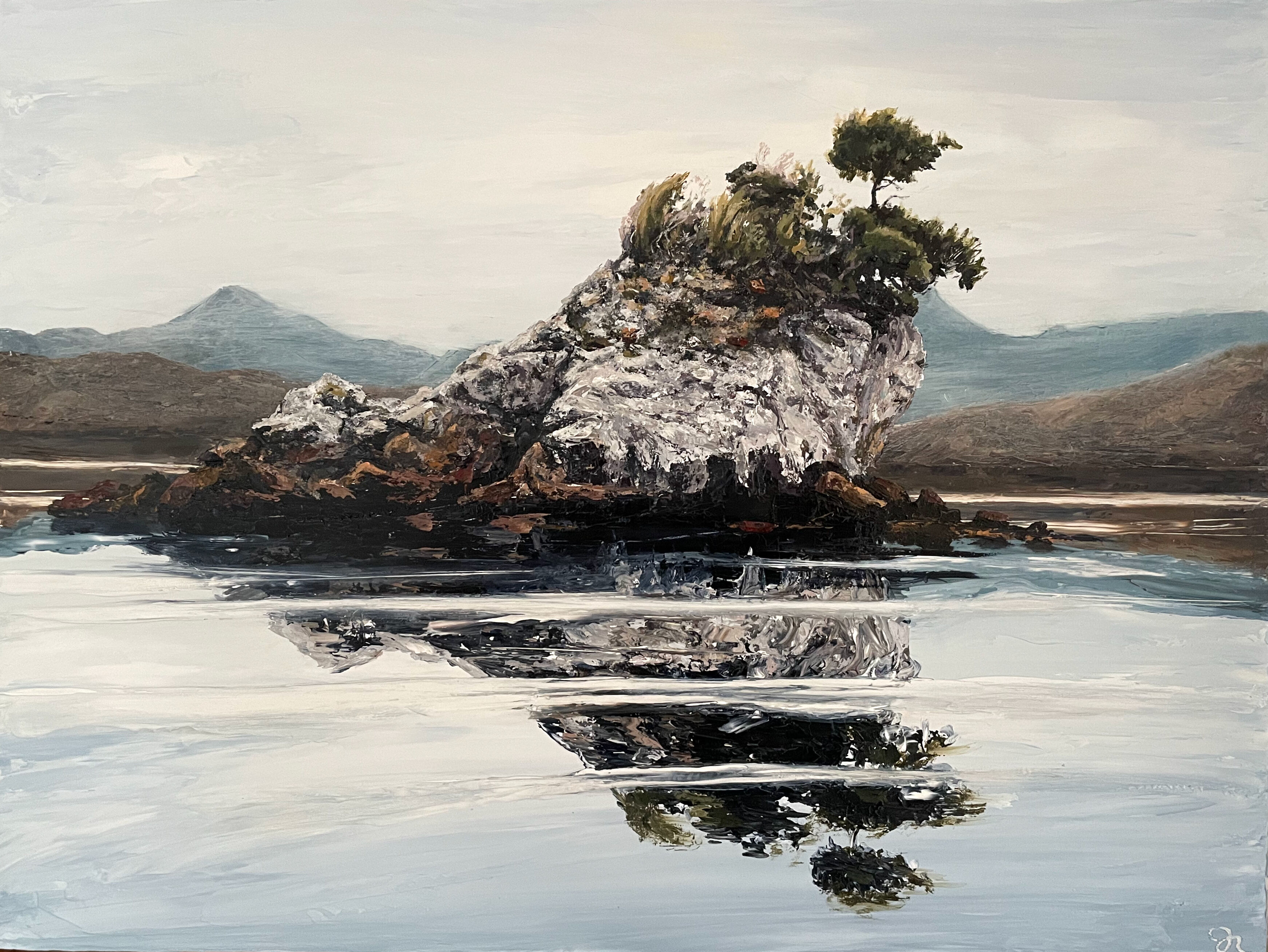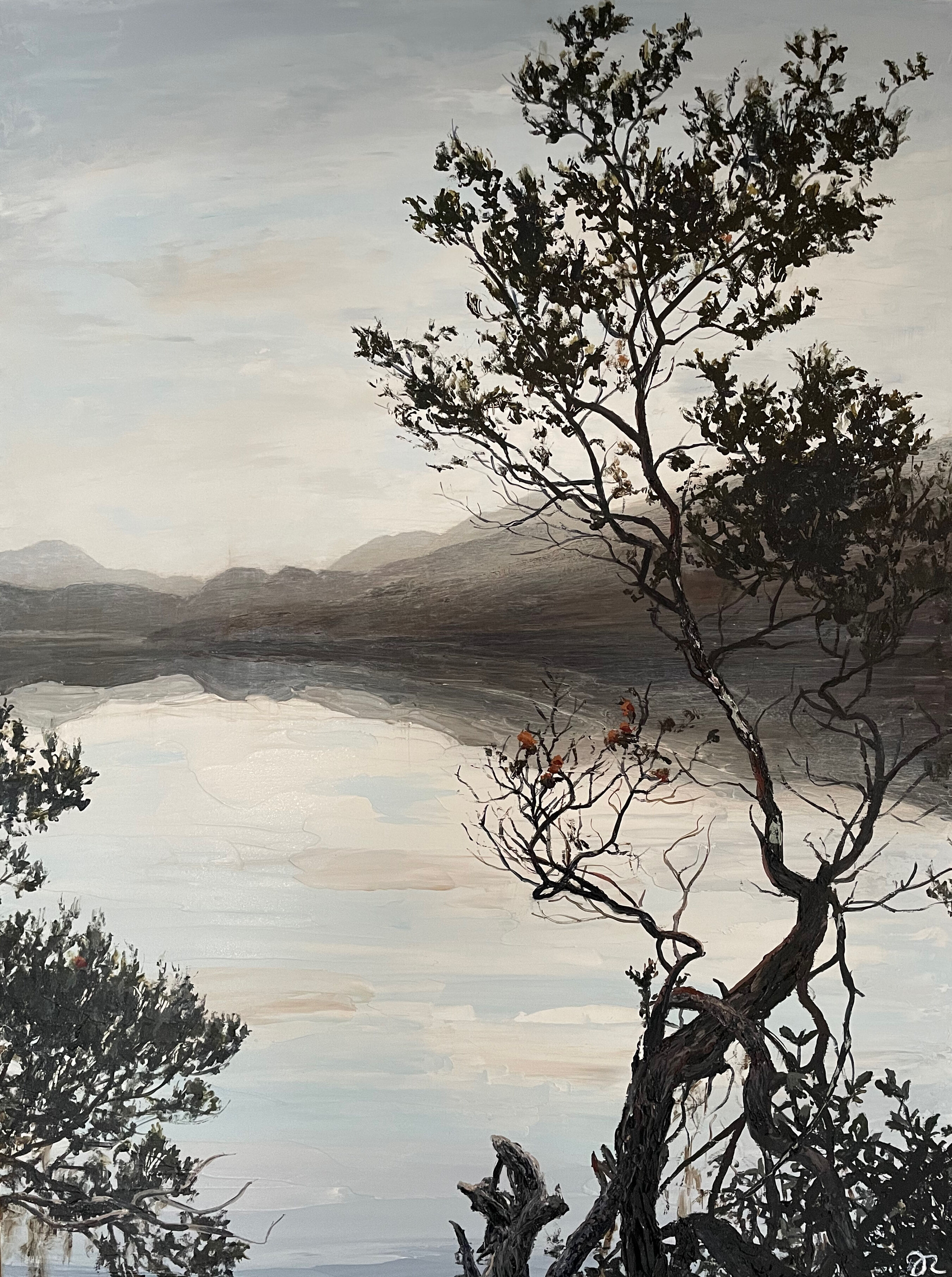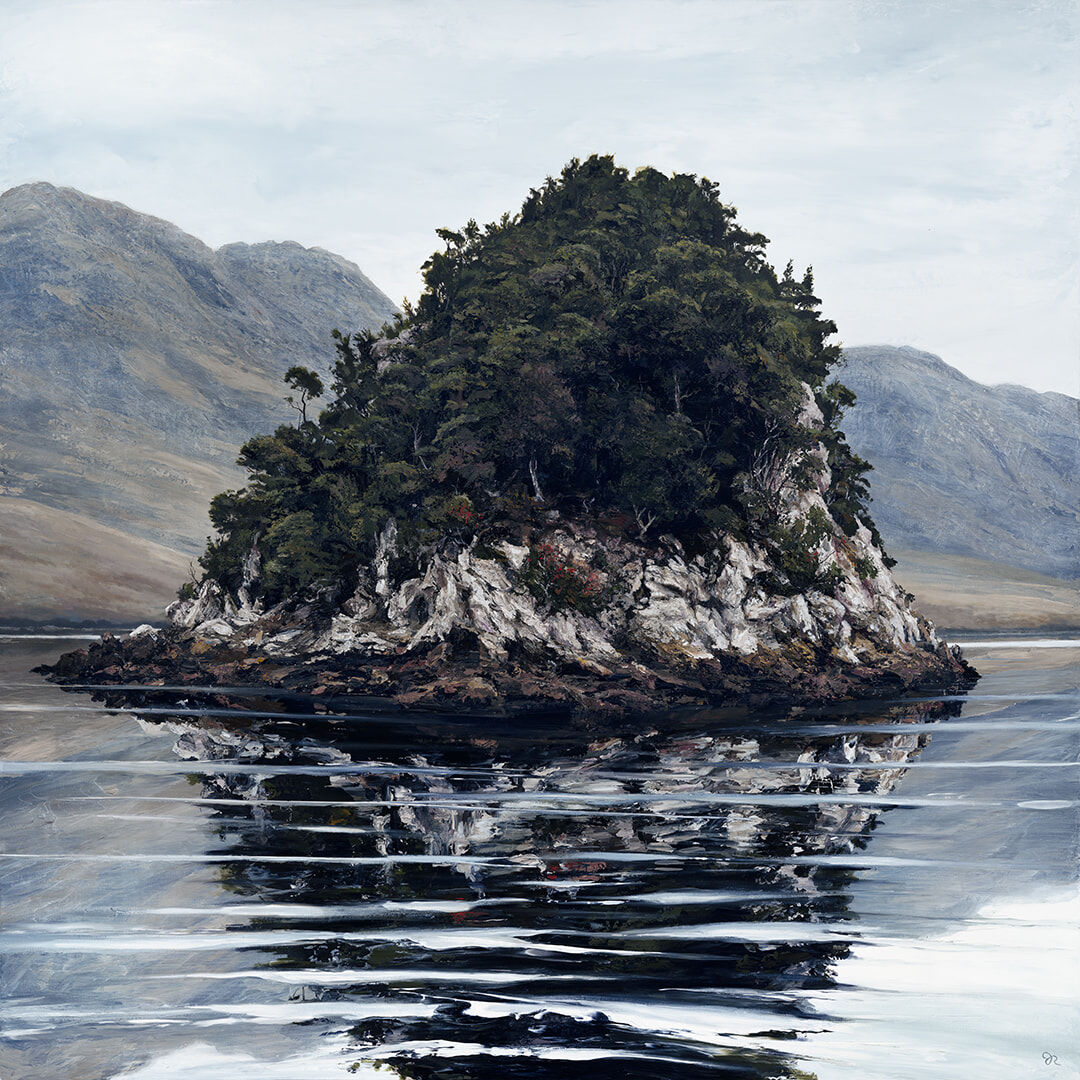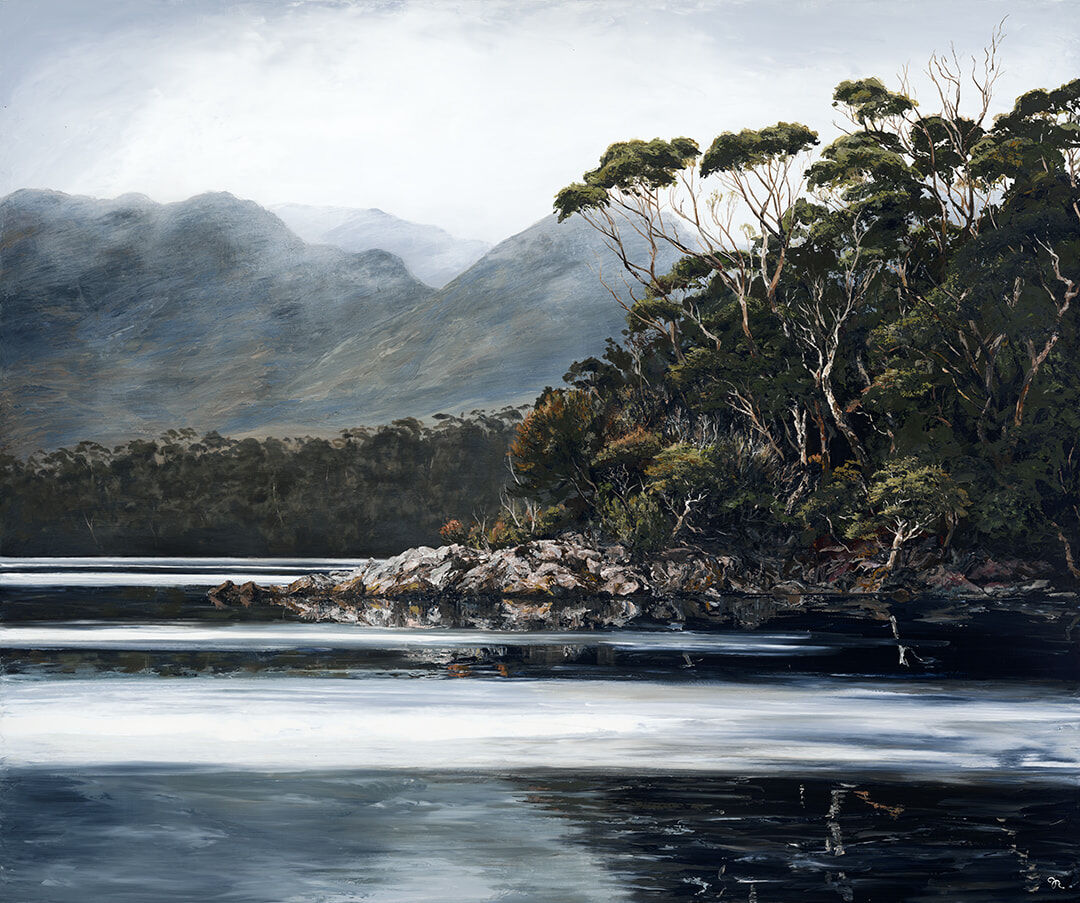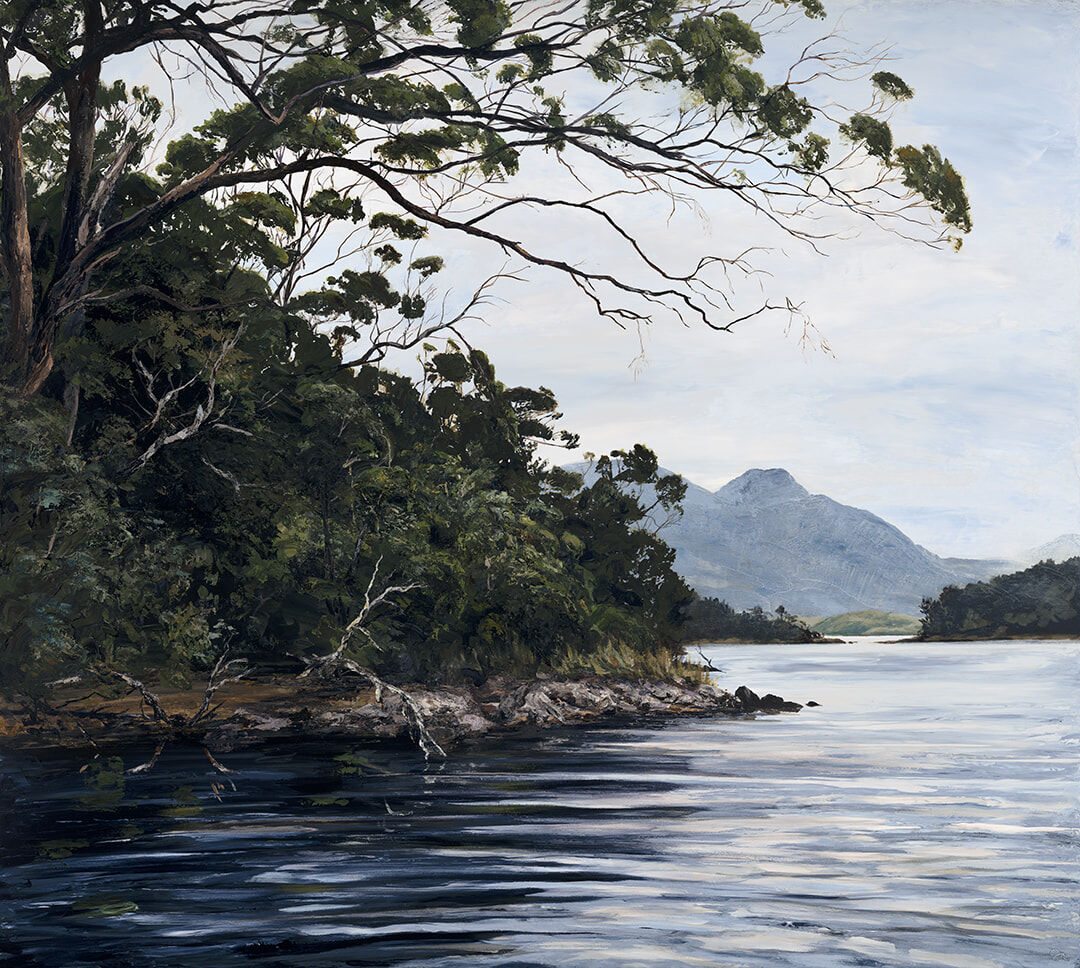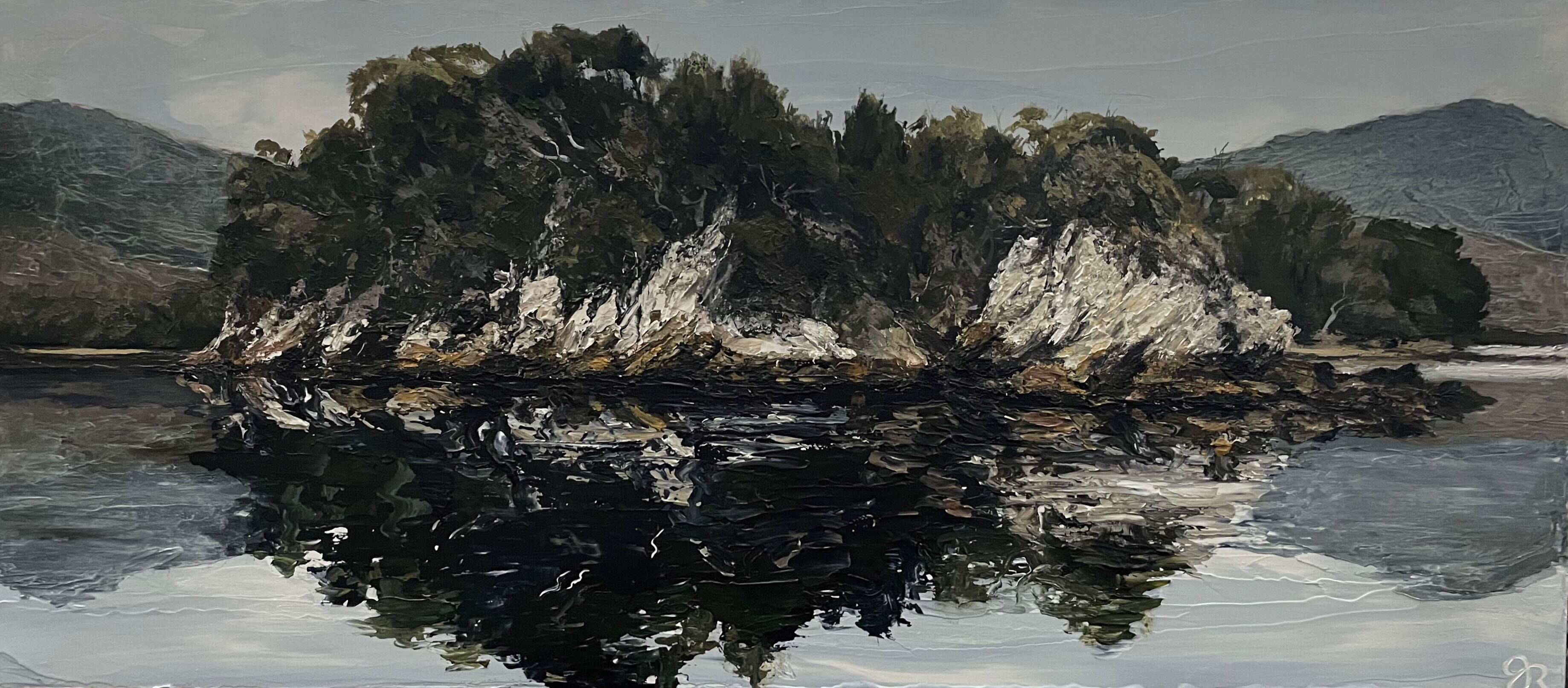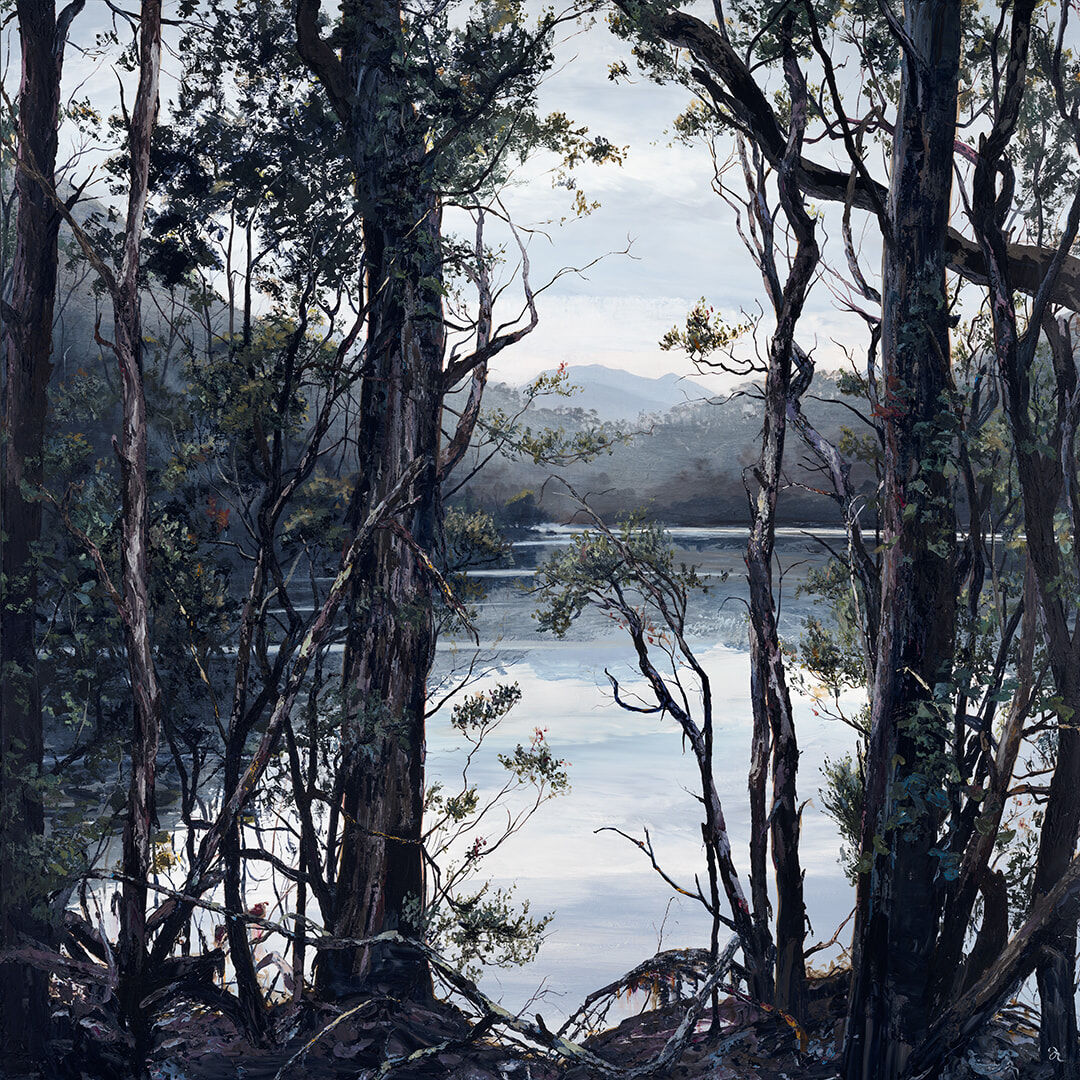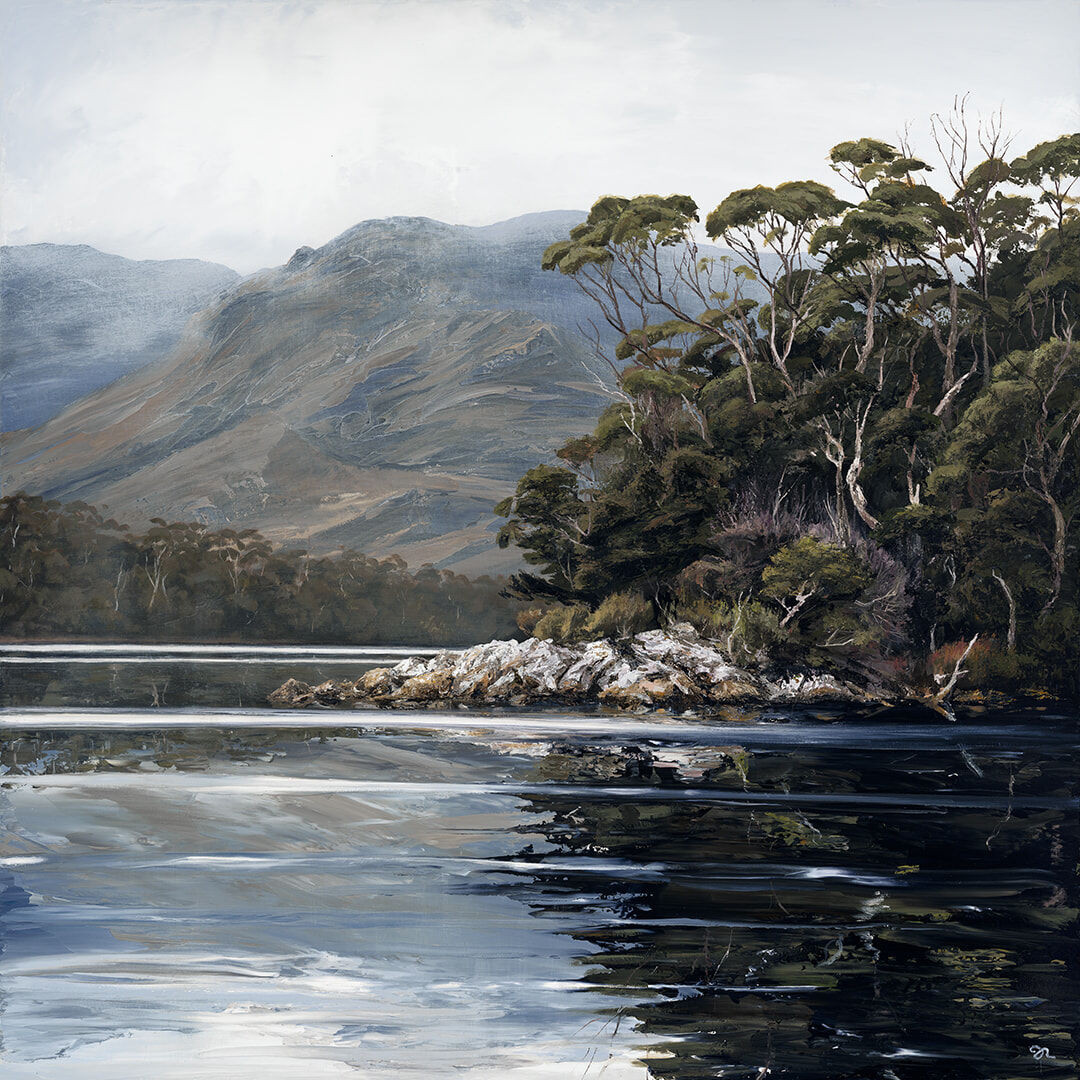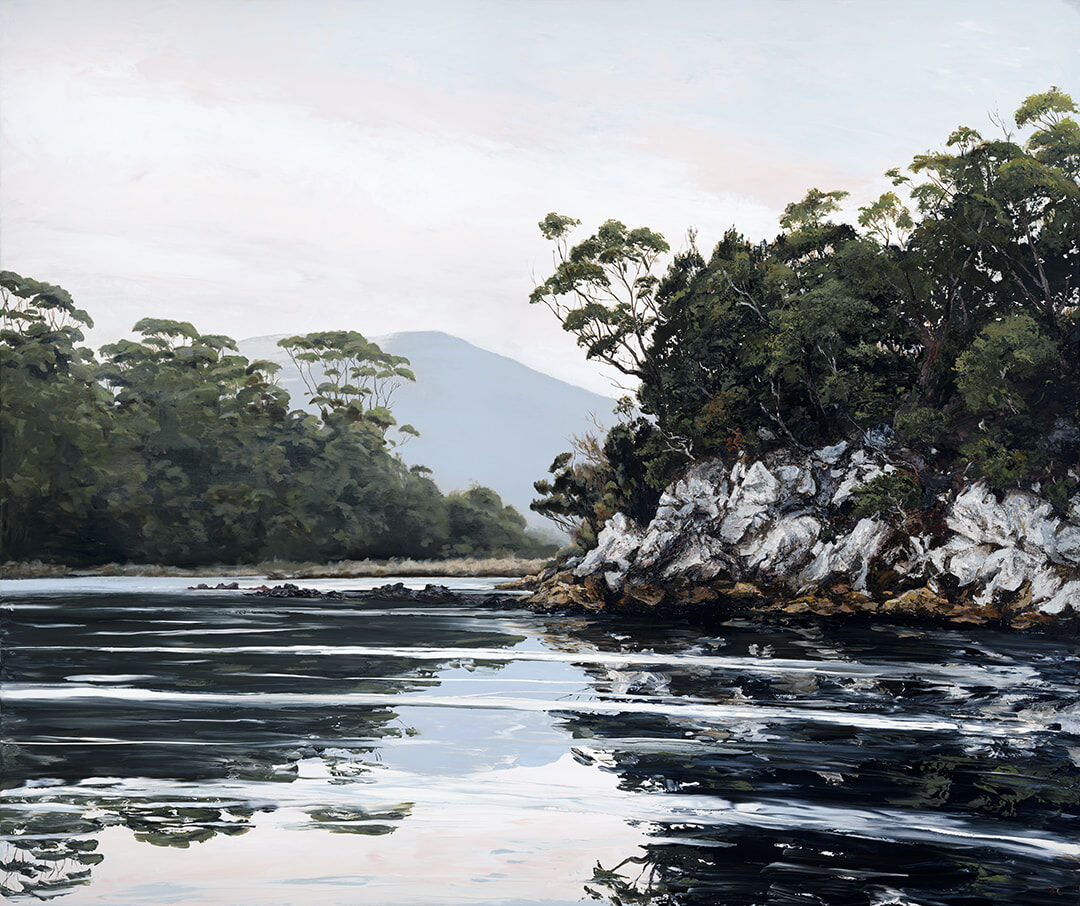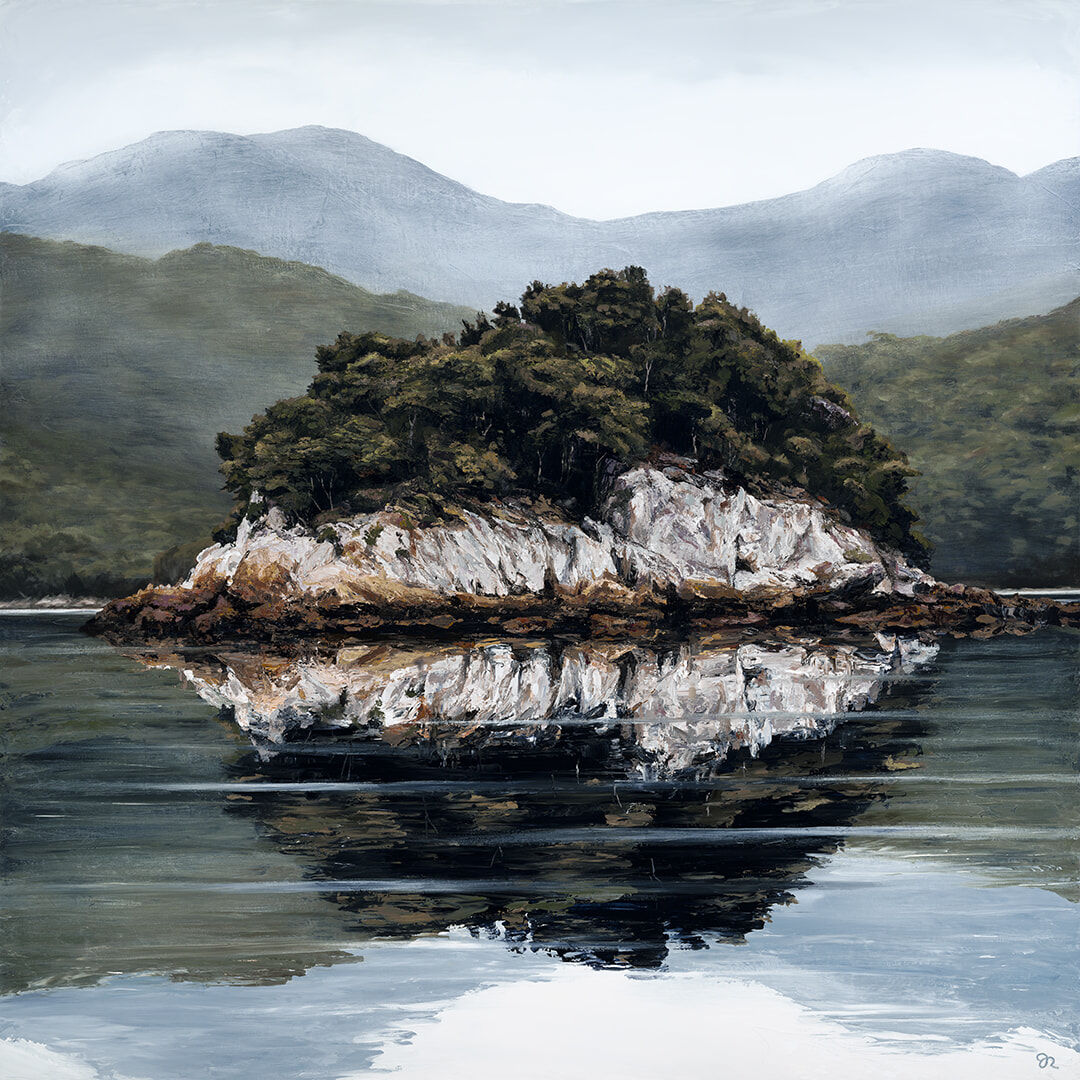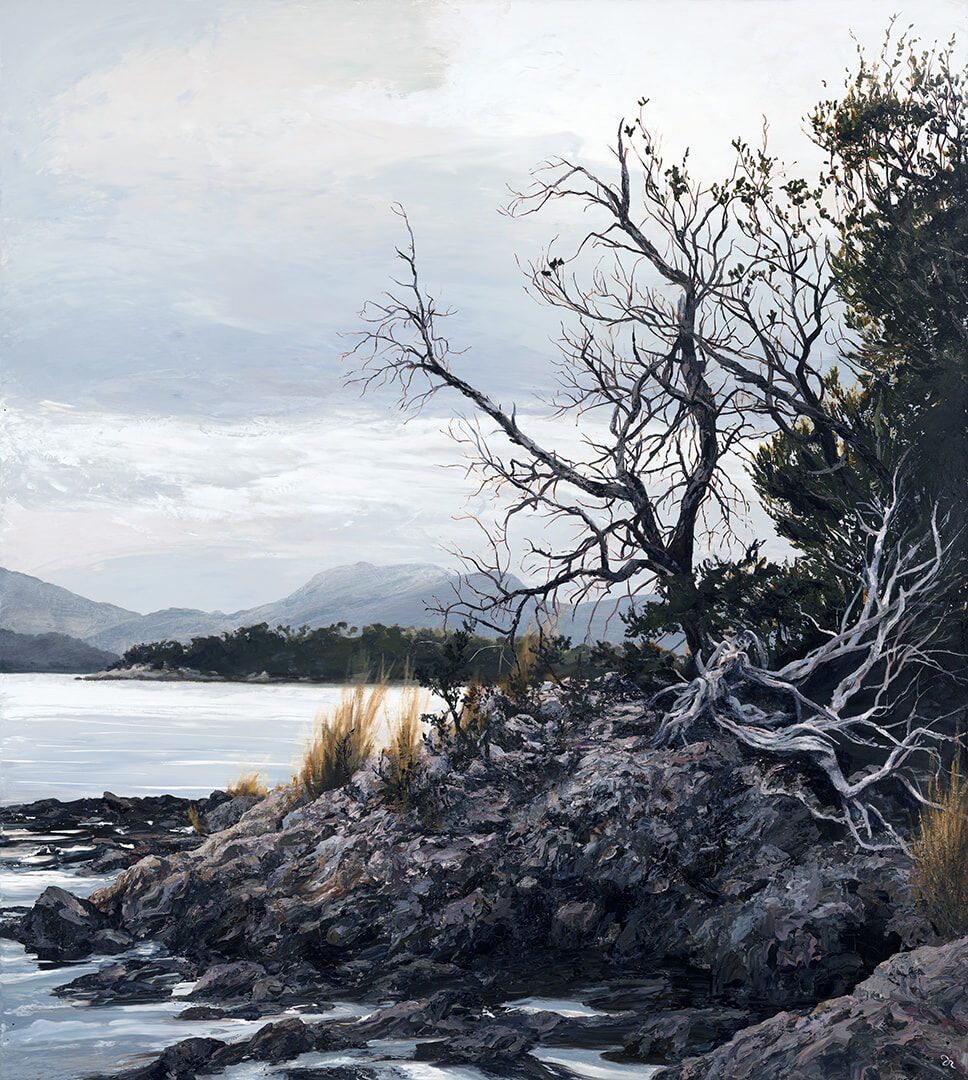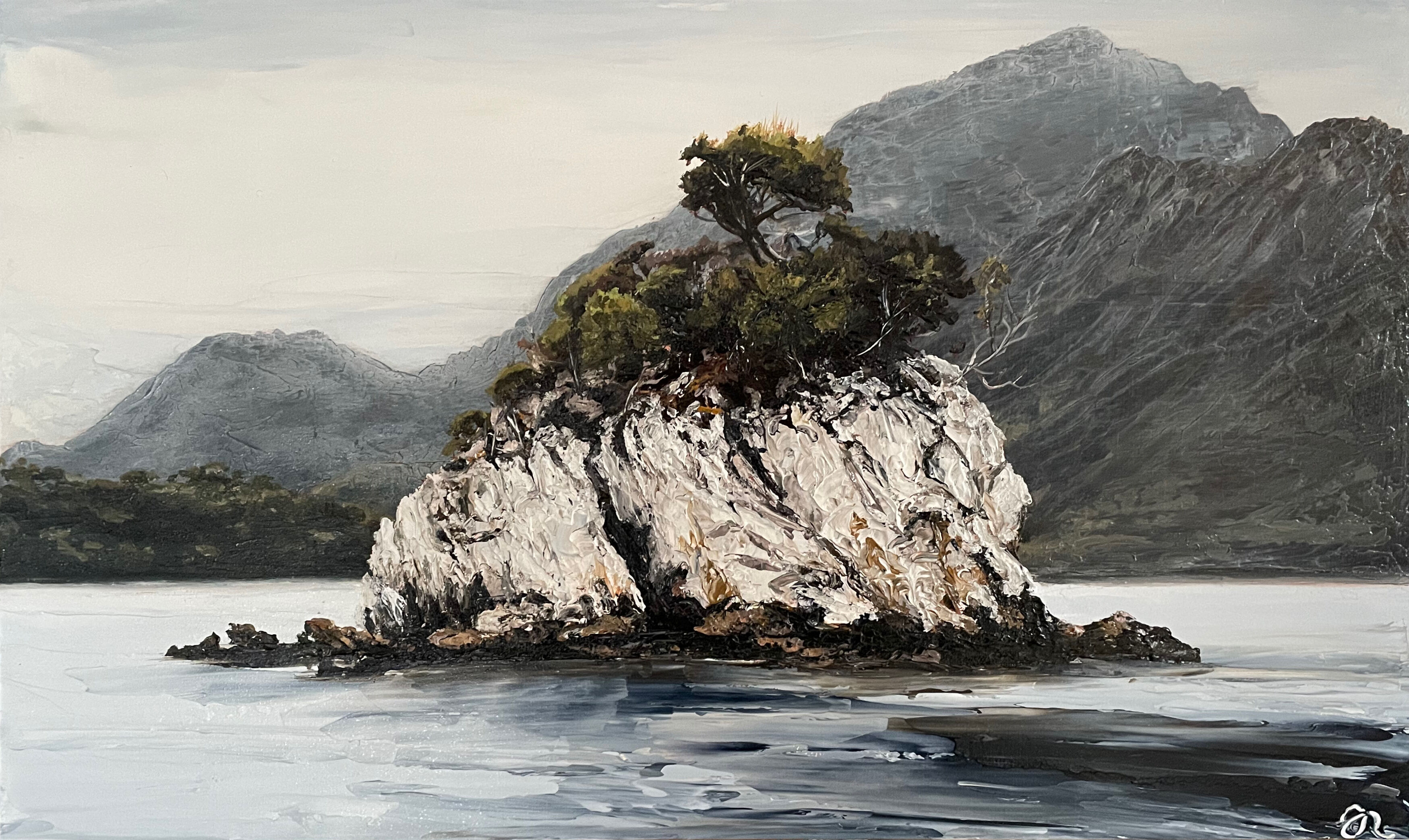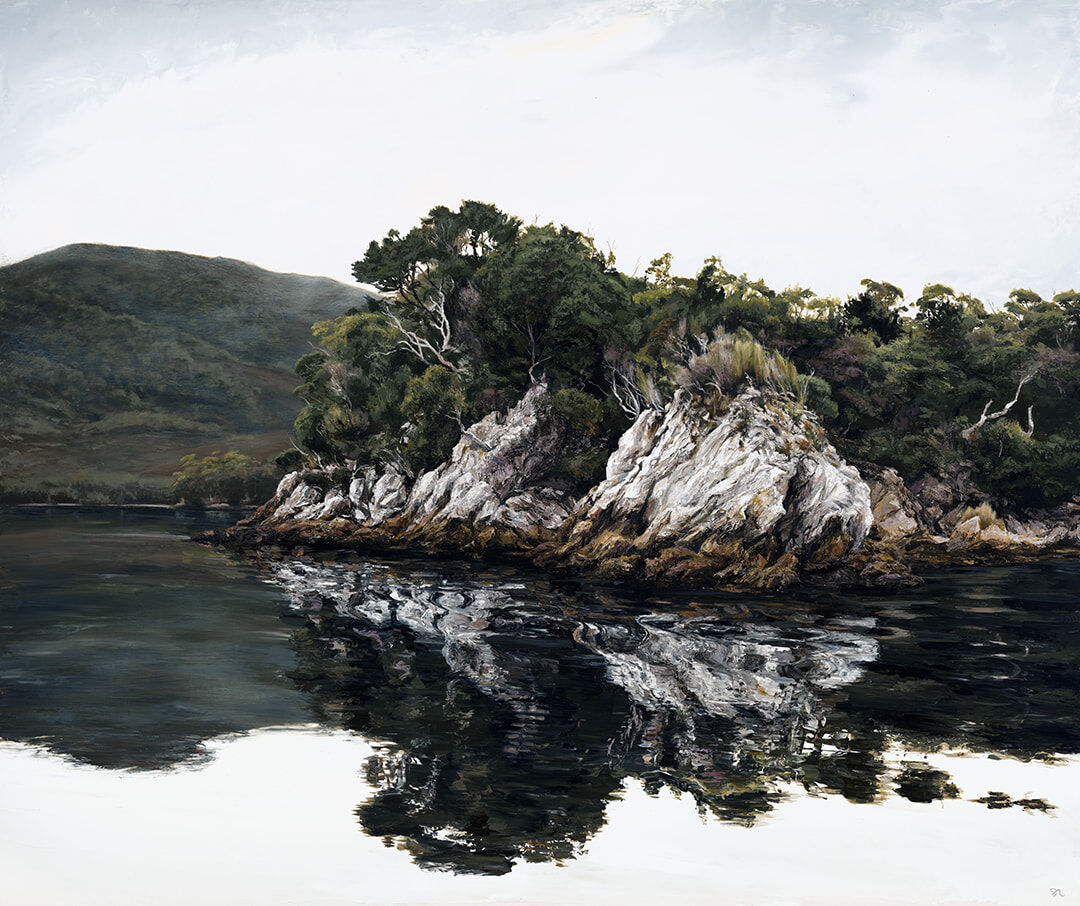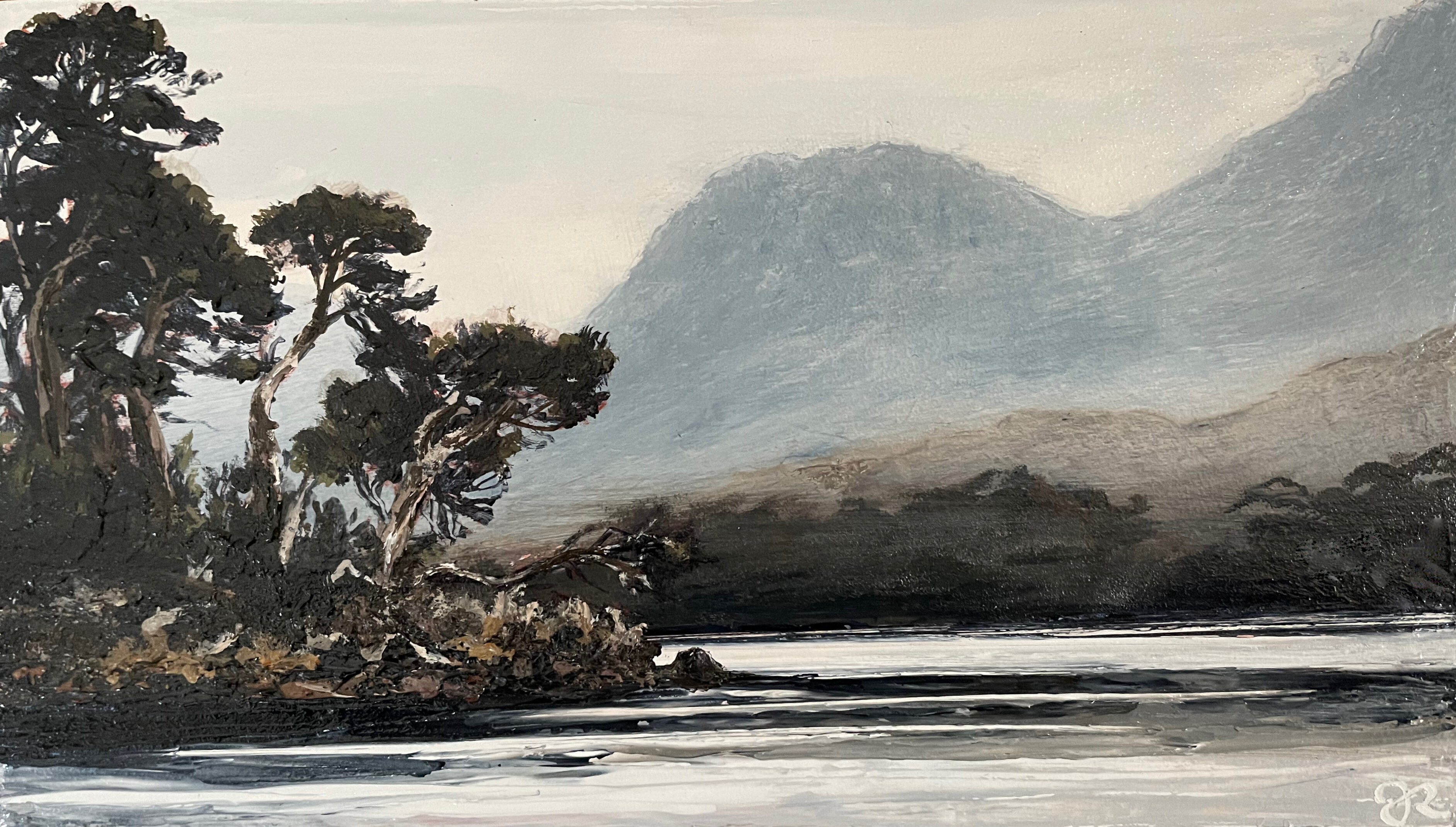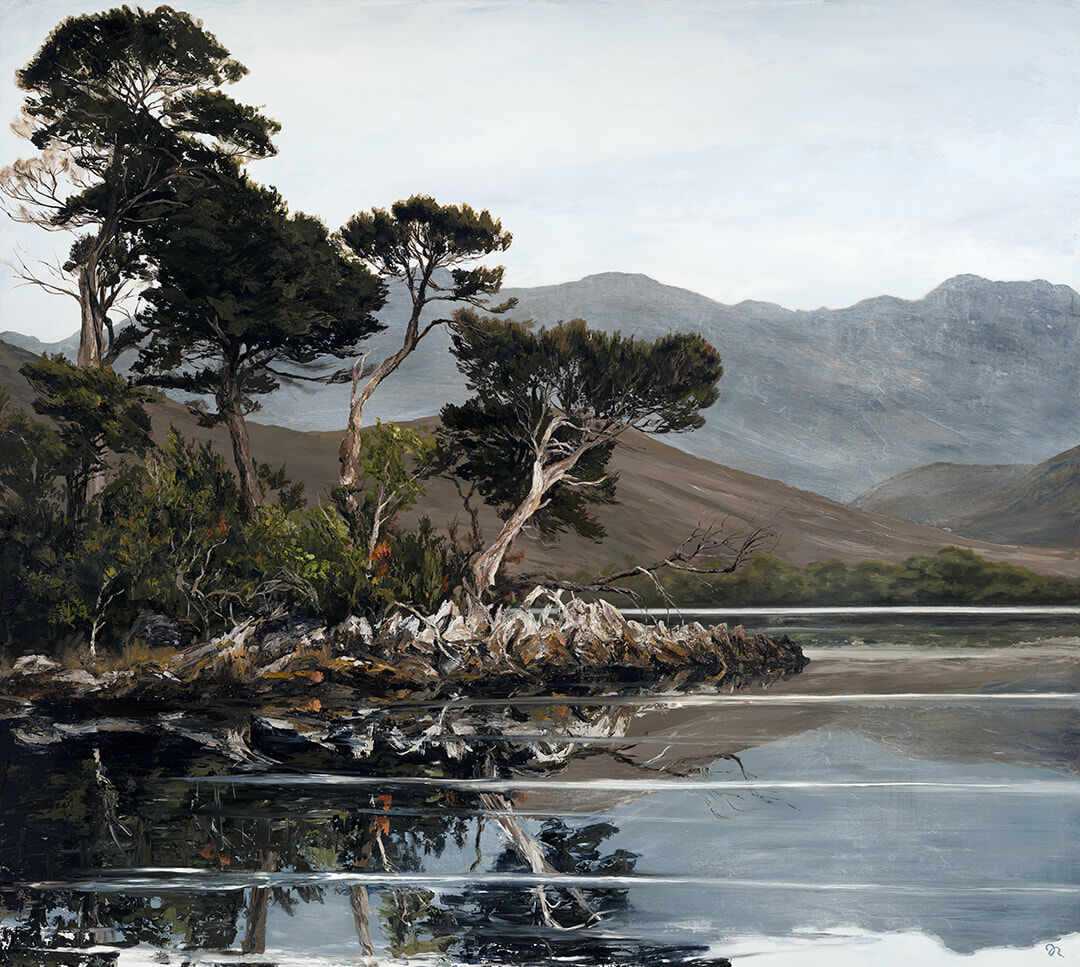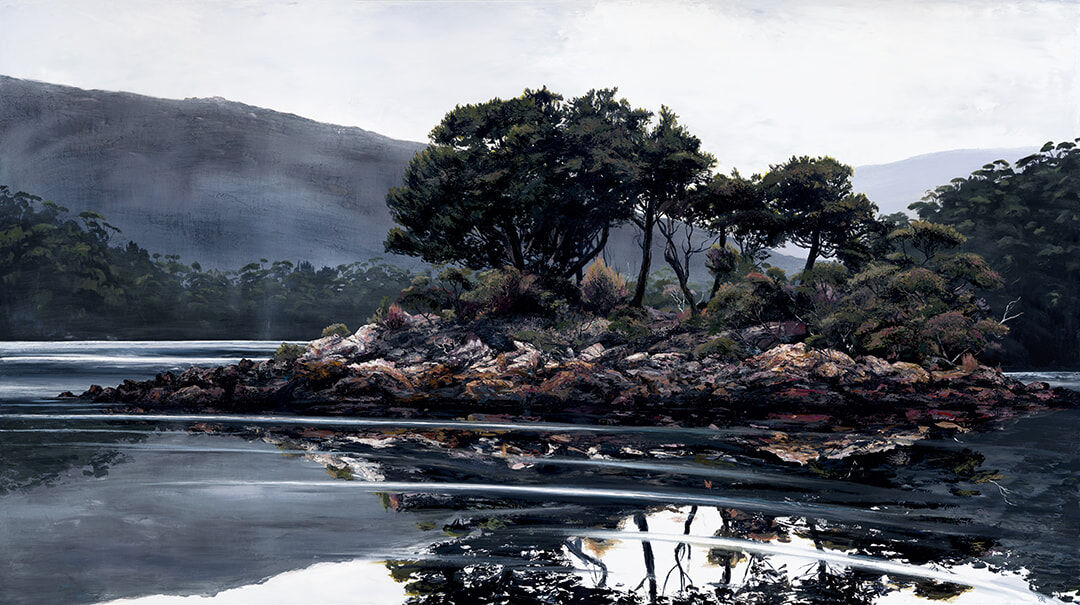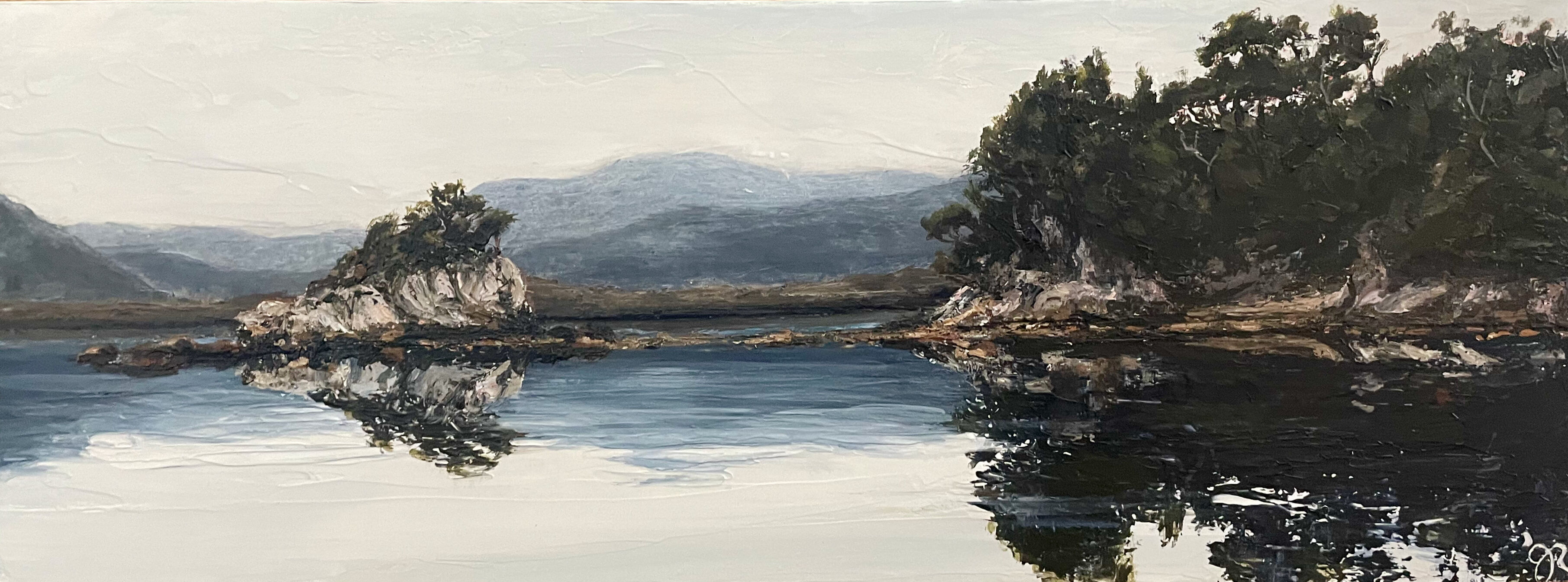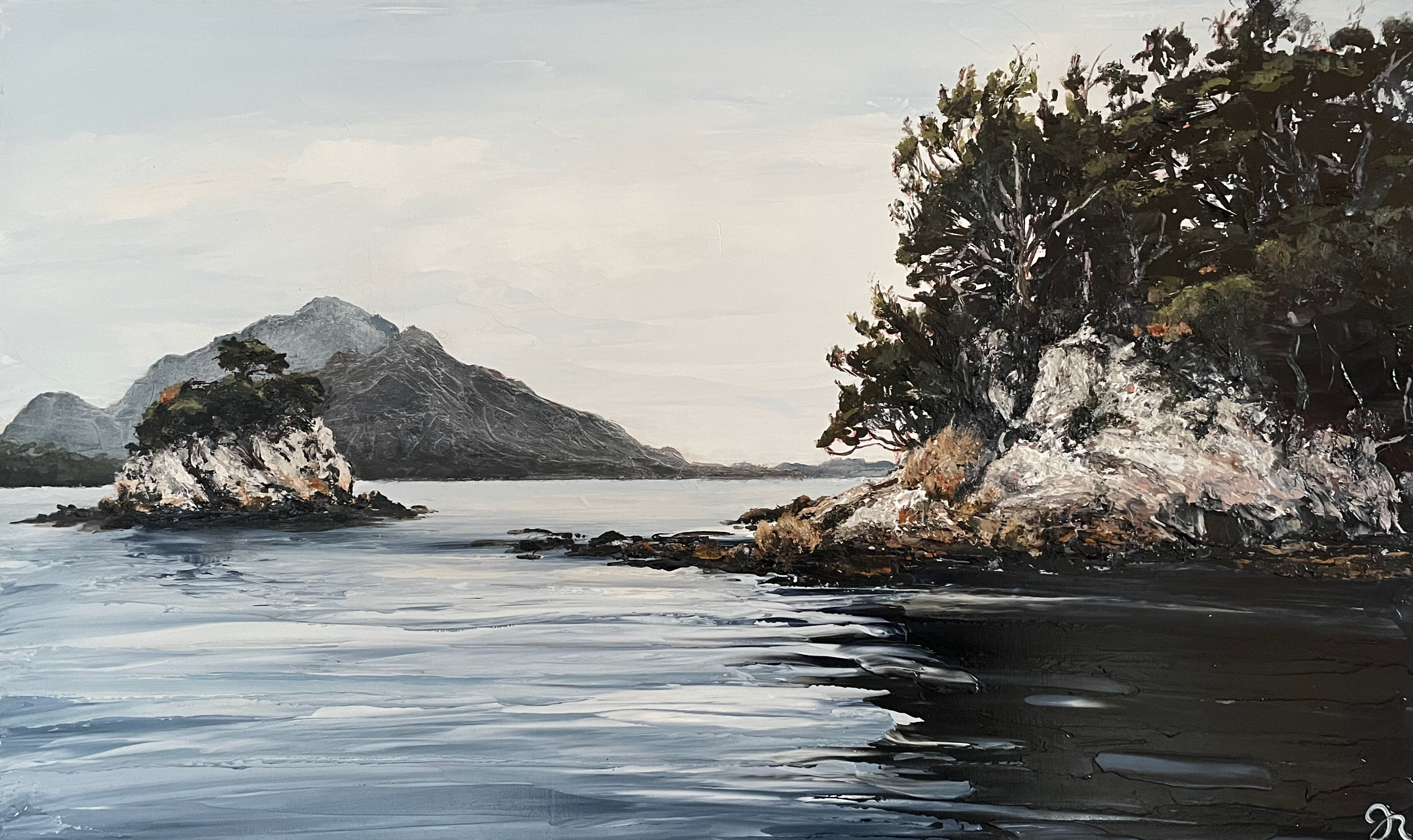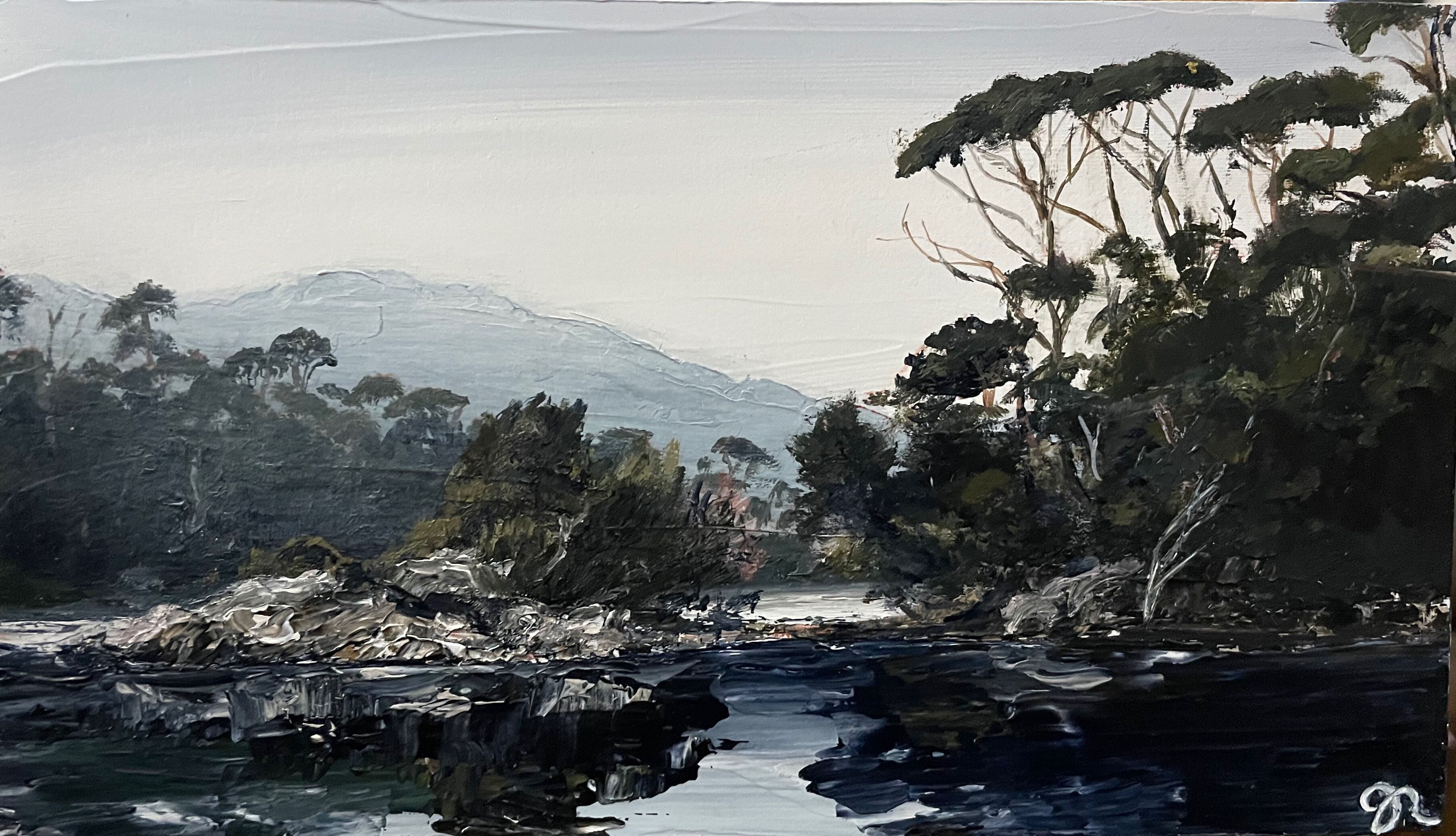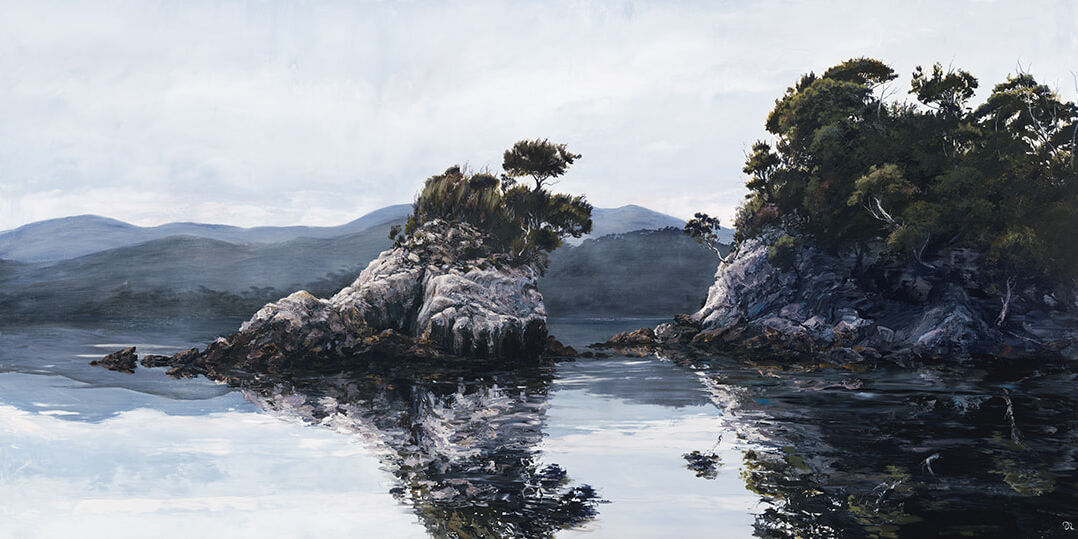
Depth of Place 2023
3 Aug 2023 - 15 Aug 2023
Artworks in Exhibition
This exhibition draws upon what our world has lost and forgotten - opening up conversations surrounding our most ancient and rare landscapes and the emotional impact of their presence in the context of today's rapidly changing world. With concerns surrounding humanities growing disconnection from our natural world and the growing vulnerability of wilderness landscapes, I aim to evoke a sense of unity and peaceful harmony, reuniting our relationships with nature by focussing on the sublime and humbling landscapes of Bathurst Harbour and Port Davey in Tasmania's remote Southwest.
I've been returning to this region, studying the light, changing weather conditions and observing the unique geological and ecological presence that pulses throughout this time-weathered land for over eight years. Each return births a series of new paintings, deepening my love, appreciation, and emotional connection to this place. Through this ongoing relationship, I focus on the silent atmospheric beauty that hangs in the air - the same transcendental awe that has helped me through a time of loss, enriching my spiritual growth and informing my art practice for the past two decades. It is here, in these quiet moments, where I've found myself deepening my senses to the volume of air before me - surging an awareness no longer of oneself but a consciousness that extends well beyond.
Through this connection, I hope to create an informed representation that evokes a sense of place - honouring this land's past and the deepening vulnerability of the wilderness landscape as we grapple with the realities of climate change on our most precious environments. With sentiments surrounding our intrinsic connection with nature and the importance of strengthening this relationship, I reflect on this land's ancestral heritage and acknowledge the traditional owners of this country, the Needwonnee and Ninene Peoples and their deep reciprocal relationship with the Land, Sea, Waterways, Sky and Culture.
As this landscape confronts a new dawn in its long history, I examine the intensity of emotions that have surfaced collectively during the recent epochal events surrounding global warming and the lockdowns of the Covid-19 pandemic. As the flaws of high-density urban living and our growing segregation from green living spaces revealed our collective elemental response to seek nature and slow our rhythms in its presence. As a result, our national parks, beaches, and bush trails became a refuge from their urban confines - exposing our primal need to escape and immerse ourselves within its natural beauty. A sense of realisation filtered through the chaos and mayhem, and our need to be with nature became the clarity from which we found hope.
Today, more and more studies confirm what many cultures have known for thousands of years, in that we are a part of nature, not separate from it, and immersing in a natural environment provides health benefits to both our physical and mental well-being—proving how imperative it is to rethink how we live our lives, not only for the health of ourselves but for the health of our future generations and our most vulnerable species and ecosystems that inhabit this great Earth.
Through empirical observations, empathy and love for this raw and rare wilderness, I hope to provide a soulful space within these paintings. One that offers a quiet place beyond the foreground and into the depths of the horizon, illuminating lost memories and renewing the inherent threads that bind us to this Earth and together.
Jennifer Riddle
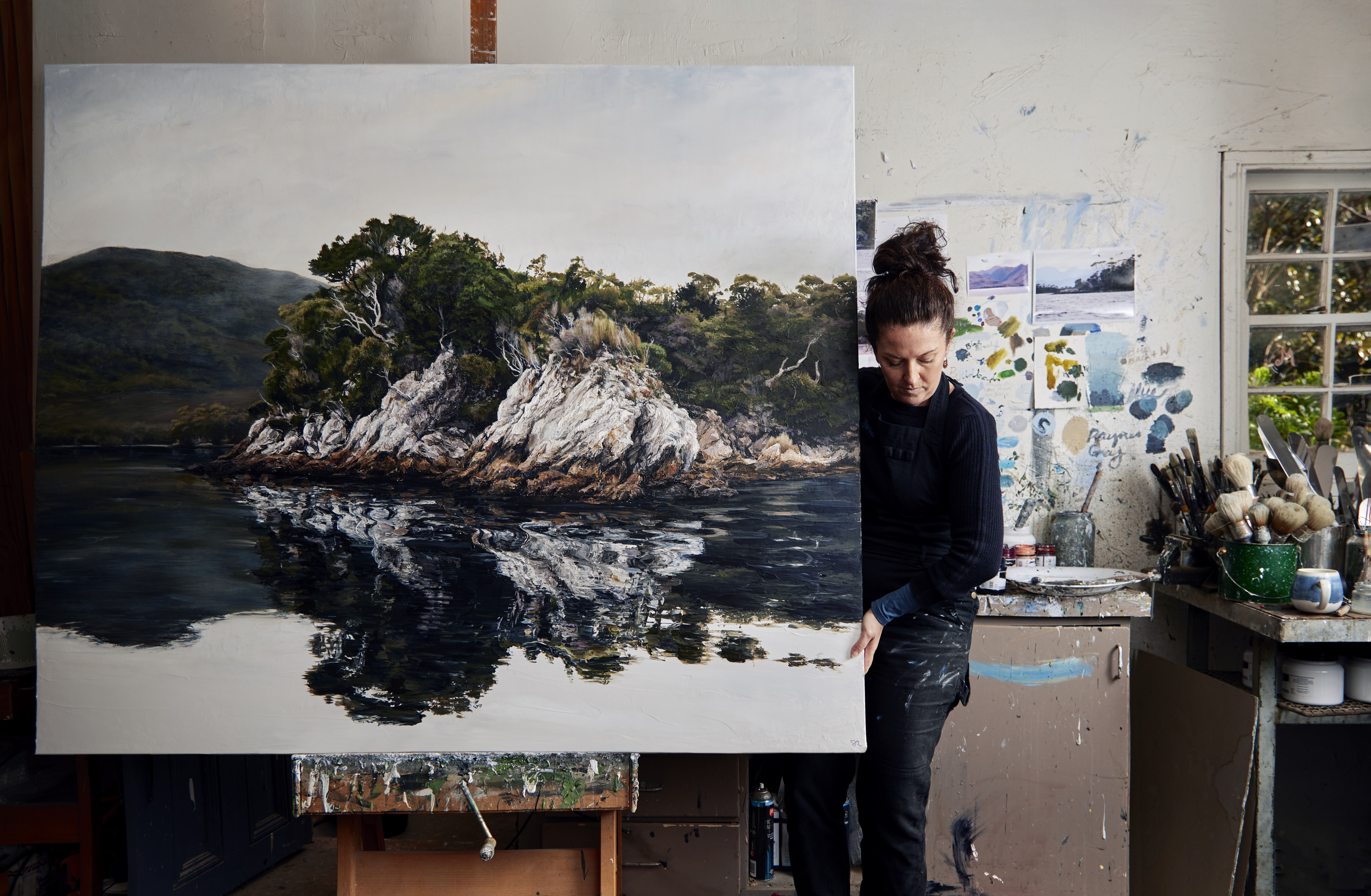
The world is very, very beautiful when you look at it, but most people don’t look at it – an observation by one of the world’s most influential living artists, David Hockney. How artists see nature matters. Not just to inspire awe and wonder, but to help us see. It matters even more when Earth’s systems are increasingly collapsing, caused by human over-reach.
In Depth of Place, Jennifer Riddle understands that gasping at beauty is not enough in these dark times. Her subject – Port Davey and Bathurst Harbour – is a majestic, drowned landscape, a river valley belonging to a time when the sea level was at least 120 metres lower. The weather hits here first with oceanic force, creating conditions for a temperate rainforest, a type of forest so depleted it covers just 1% of the world’s surface. People say this is a lost world that time forgot. But it was home to the Needwonnee peoples for millennia, and home to more recent settlers too.
A single image prompted Riddle’s first visit to Tasmania’s deep Southwest eight years ago: a view from the top of Mt Rugby, overlooking a colossal harbour and waterways seemingly encircled by wild mountain ranges. She couldn’t believe that such a place existed in Australia. Since then, a magnetic-like pull to paint the region has seen her return every year on field trips, producing a series of over seventy works.
Each time the artist adventures to the Southwest her guides are thrilled because of the rare light she shines on the landscape. They say she has a gift of leaving herself open to any eventuality or nuance of the weather as they nose into coves in Bathurst Harbour, deciphering the peaks and their trailing veils of mist.
She says the moment she finishes a painting feels like an exhalation. The painting that won the 2022 Glover Prize caught her out: she’d never experienced tears before with her own work.
Depth of Place offers a deep understanding of Australia – one the country is still learning to chart. Whose voice speaks? When you truly look, it’s more than one and the voices go deep and wide and through us. Riddle does not colonise but catches these voices like a spider’s web, like the forest floor craving the occult precipitation of fog and dew or the condensation of mist that slow drips from ancient rainforest foliage, undetectable by the human rain gauge. Riddle uses the palette knife to translate with a gossamer-like touch.
Her annual pilgrimage starts with shutting up studio in her Red Hill home in rural Victoria, packing a small rucksack with all-weather gear, sketch book and camera, and flying to the remote gravel airstrip of Melaleuca, then onward by boat to stay in a forest camp with no mobile or internet connection. She rises before dawn to board the boat at Forest Lagoon. The guide, who holds a deep respect for this place, has come to regard Riddle as part of the landscape. In conversation, the ancient Smithton Peppermints on the northern end of Munday Island are ‘Jenny’s trees’, and the tiny islet in Horseshoe Inlet which featured in the Glover Prize winning painting, ‘Jenny’s island’.
Riddle has studied the biophilia hypothesis: the proposition that we are innately and genetically determined to have an affinity with the natural world.
That we are drawn to and need nature, and in some instances affiliate with it emotionally. She uses this to explain how the presence of her sister, Andrea, is never far. That without Andrea, who passed away twenty-three years ago, she would not have had the courage to become a full-time artist. Such a loss has helped inform her relationship with nature and her devotional paintings.
For Riddle, it is in nature we find healing and consolation. “Whatever is going on in your life you refuel and have a renewal of sorts – that is consistent in 20 years I’ve being painting.” This devotion and gratitude towards her sister culminated in the powerful ‘Sisters’, the biggest and final painting completed for this exhibition. Riddle describes the twin paintings as a union – with nature and the union she continues to have with her sister. “They are intertwined.”
Whilst her paintings start with quick sketches, small studies, and images of her expedition, the work itself is completed in the studio using refined techniques developed over time, creating an effect more atmospheric than photographic. Geographical correctness is not the end goal and artistic license is embraced to add compositional value. To use the title of one of her paintings, Riddle’s is an atmospheric embrace.
When you’re up close, the artist wants you to feel the work of her tools, so you know that it’s a painting. That it’s a marriage of what she sees and feels. In a world where photography has gone viral, she has no interest in being photographic. What the viewer is being encouraged to do when looking at these paintings is consider: How do they make me feel?
Unlike the pioneer adventurer’s thirst for unconquered territory, it’s not the new, unexplored horizon that calls Riddle. For her, it is frequently the very same spot. The ancient trees of the Celery Top Islands (‘Wanderings of the Past and Now’) offer infinite fascination. Each time she returns she witnesses something different: the trees, totems of a world that once was.
Links between the old people’s stories and the landscape are closer to the surface in the World Heritage Area. Within these shared stories lies a deep love, a deep knowledge of place, infusing the real world with sacred meaning. If we may be permitted, in a time of ecological crisis, these are stories we need to see, we need to hear, and we need to learn. Riddle no longer uses colonial placenames in the titles of her paintings out of growing respect for the region’s indigenous past.
Over many years of venturing into Port Davey a new emotion has become attached to the stillness. Wildfires have appeared in the high country, in places where fire has never been seen before. Admiration and empathy converge as Jennifer Riddle realises the Southwest story is more than one of stoic survival, it is also immensely vulnerable. As a sign of our true nature, the sheer beauty of this exhibition should cause us all to reflect.
For Riddle, it is the Southwest’s gentle stillness that speaks loudest. She is entranced by the calming effect it has on the people she has encountered in the Southwest; how just being there encourages exhalation. Such an instinctive response she understands as a spiritual experience — an expression of the loves and hopes of all time.
Hilary Burden

